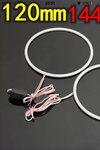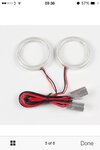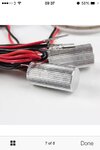Marty Reid
Newbie level 4
I want to add LEDs to my electronic kick pedal (Roland KD9) that light up the rim in response to how hard the piezo pad is hit. The LED ring is 12-24V (car headlight type) but the drum pad highest output seems to be around 50mV with crude metering. I know little about electronics but hopefully some of you might help me understand how I could make a simple circuit to boost the drum pad output to operate the LEDs without affecting the signal going to the drum sound module?


